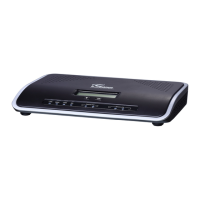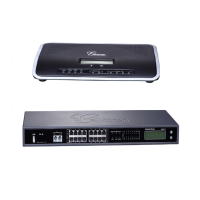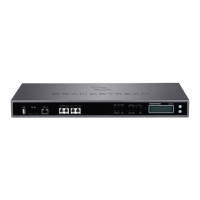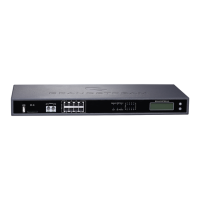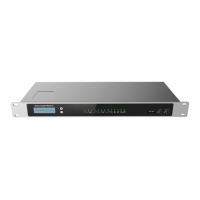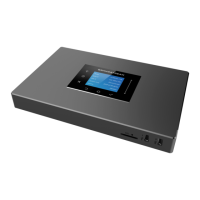The file to be imported must be a CSV, VCF or XML file with UTF-8 encoding. Users can open the file with
Notepad and save it with UTF-8 encoding.
Here is how a sample file looks like. Please note “Account Number” and “Phonebook DN” fields are required.
Users could export a phonebook file from the UCM6100 LDAP phonebook section first and use it as a sample
to start with.
Figure 40: Phonebook CSV File Format
The Phonebook DN field is the same “Phonebook Prefix” entry as when the user clicks on “Add” to create a new
phonebook. Therefore, if the user enters “phonebook” in “Phonebook DN” field in the CSV file, the actual
phonebook DN “ou=phonebook,dc=pbx,dc=com” will be automatically created by the UCM6100 once the CSV
file is imported.
In the CSV file, users can specify different phonebook DN fields for different contacts. If the phonebook DN
already exists on the UCM6100 LDAP Phonebook, the contacts in the CSV file will be added into the existing
phonebook. If the phonebook DN doesn’t exist on the UCM6100 LDAP Phonebook, a new phonebook with this
phonebook DN will be created.
The sample phonebook CSV file in above picture will result in the following LDAP phonebook in the UCM6100.
Figure 41: LDAP Phonebook After Import
As the default LDAP phonebook with DN “ou=pbx,dc=pbx,dc=com” cannot be edited or deleted in LDAP
phonebook section, users cannot import contacts with Phonebook DN field “pbx” if existed in the CSV file.

